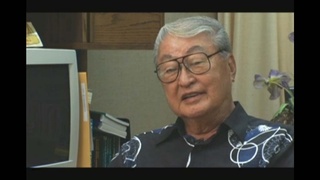Interviews
Using tissue typing and blood tests to determine paternity
The story is that this was just a routine paternity test. The only difference was the twins were dizygotic twins, meaning that they’re not identical twins. And when we testing them, they were strange because he was probably the father of one child but not the father of the other child.
So my first thought was that somebody mixed up some test tubes in the lab. So we called the mother and asked her, “Please come in. We seem to have some kind of mistake here. We want to test everybody again.” And she said, “I have a better idea.” So instead of coming into bleed everybody, she brought in another man. And this other man turned out to be the father of the other twin and not the father of the first twin. So it became obvious that one father was father of one twin, and the other man was the father of the other twin. It couldn’t have been any other way.
And again, something like this could not have been discovered by the old system. Only by HLA1 typing, a very polymorphic system, that we could pin that down. And we published that in the New England Journal of Medicine2. I think in history, it’s been shown before. There was a case in Germany where one dizygotic twin was obviously from an African American and the other was white. So they were pretty sure that something like this can happen. But our case was the first one shown by tissue typing and blood test.
So then after the publication, the news media came to UCLA and wanted me to tell them about the mother, and I told them that this was all confidential. I can’t do anything. So what they did was they announced it on television and talked about the case and asked the mother come in. And the next day the mother showed up and talked about her adventures. So it was very surprising that she wanted to be on TV.
1. HLA is the acronym for human leukocyte antigen, a genetic maker found on cells of the body that determine white blood cell types. The HLA system is used to assess tissue compatibility for organ transplantation and platelet transfusion. There are over ten thousand HLA types.
2. P. I. Terasaki, D. Gjertson, D. Bernoco, S. Perdue, M. R. Mickey, J. Bond, 1978, “Twins with two different fathers identified by HLA,” New England Journal of Medicine, volume 299, P. 950.
Date: February 10, 2004
Location: California, US
Interviewer: Gwenn M. Jensen
Contributed by: Watase Media Arts Center, Japanese American National Museum.




